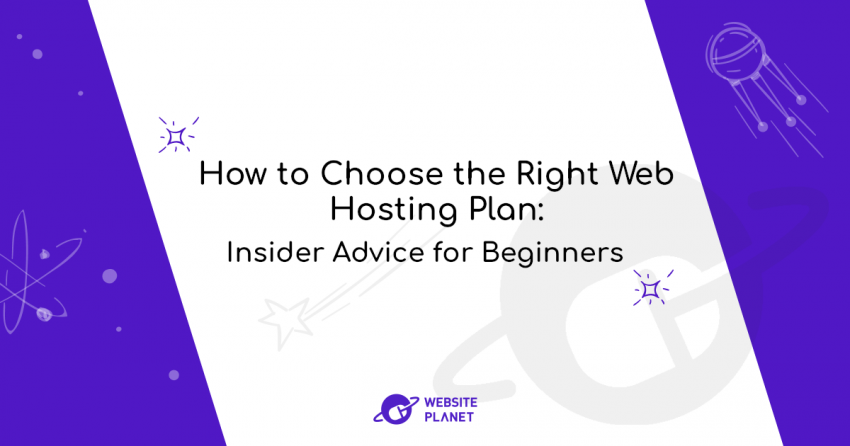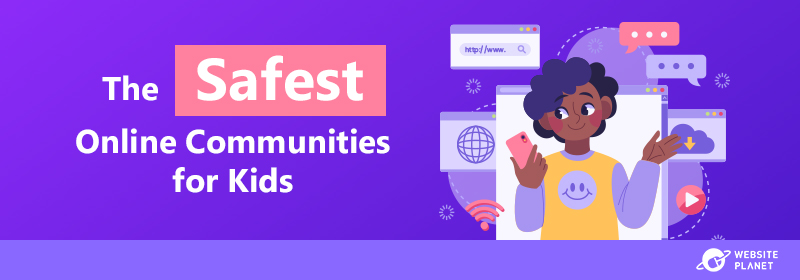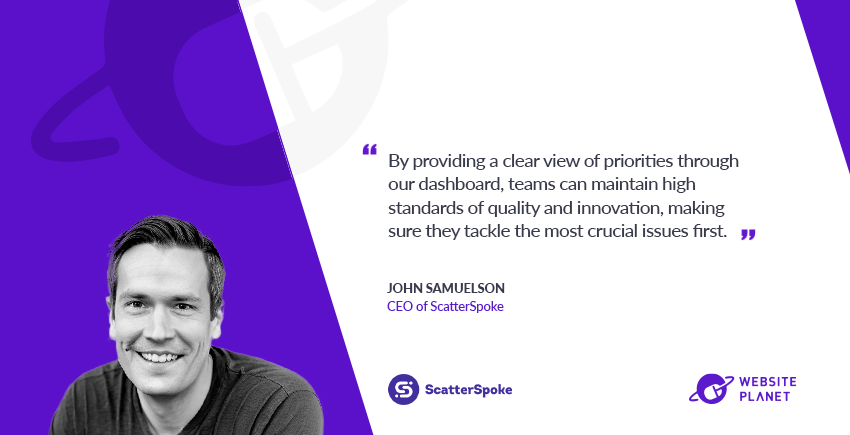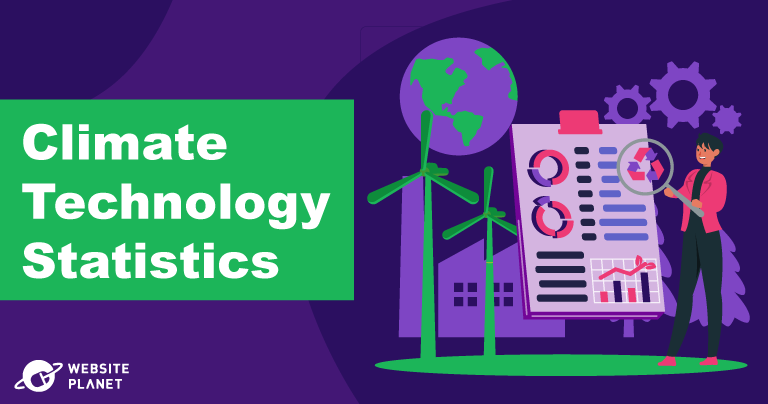Email is stressful. That could be a baffling statement to some, but millions of people experience the scourge of email first-hand. This article will teach you everything you need to know about email and mental health.
The needy client that demands round-the-clock attention. The boss who’s still organizing reports at 11 pm. The “one-up” company culture that expects employees to “go the extra mile” when out of the office. People are more connected than ever before. When these situations inevitably spill over into your email inbox, they begin to affect your everyday life.
Bad emailing habits are not just “inconvenient,” they can be fundamentally damaging for staff members’ mental health and productivity. This guide will show you how email can negatively affect mental health, along with steps employees and managers can take to reduce email-related stress.
How Did Email Become So Stressful?
Email wasn’t always the omnipresent stress-inducing force we know it as today.
It originally started as a way for academics to share resources. Now, it’s universal and inescapable. How did that happen?
| The History of Email | ||
|---|---|---|
| 1965 | The First E-Message | The first electronic message is sent on-campus at the Massachusetts Institute of Technology (MIT) in 1965.
MIT’s Compatible Time-Sharing System allowed users to share resources and messages on a central disk, with users logging in from separate, independent terminals. |
| 1971 | The First “@” Sign Is Used | A famous American programmer called Ray Tomlinson conceives the primary method of sending emails online between computers.
The “@” symbol is used to send messages to specific recipients. Previously, people could only send messages to others using the same computer. |
| 1973 | Email as We Know It | DARPA (the Defense Advanced Research Projects Agency) proposes the standard structure of an email as part of “the Internetting project.”
This includes “To” and “From” fields and the “FWD” feature. |
| 1979 | The EMAIL Program | In 1978, Eric Schmidt designs an Intranet messaging service called BerkleyNet.
Shiva Ayyadurai, aged 14, writes a program called EMAIL one year later. The program allowed users at the University of Medicine and Dentistry of New Jersey to send electronic messages to one another. Shiva copyrighted the term in 1982. |
| 1990 | The Start of Spam | This is where things start to get stressful. Spam mail began peppering the inboxes of email users the world over.
Spam was first used as a business/marketing ploy in 1994. |
| 1992 | Attachments Fill Inbox Space | The Multipurpose Internet Mail Extensions (Mime) Protocol brings the capability of attaching files to emails.
Limited inbox space means users must often frantically delete emails to accommodate attachments. |
| 1993 | Overloaded Email | AOL and Delphi connect their mail systems. This is the beginning of overcrowded (and stressful) inboxes. |
| 1997 | 10 Million Free Email Accounts | Following the release of free web-based mail services like Hotmail and Yahoo mail, email grabs the world’s attention.
Roughly 10 million people around the world had a free webmail account in 1997. |
| 1998 | You’ve (All) Got Mail | AOL’s “You’ve got mail” notification is thrust into the public eye when Tom Hanks stars in a film of the same name. |
| 1998 | “Spam” Added to the Dictionary | Spam mail is a widespread issue in the late 1990s, so much so that Oxford adds the term to its dictionary.
Marketers had discovered the relatively “free” prospecting approach of spam mail. Consequently, spam mail flooded people’s inboxes. |
| 2001 | Widespread Office Use | Email turns 30. Almost every business in a developed economy is now using email. |
| 2002 | EU Directive on Privacy and Electronic Communications | The EU passes a law that makes it illegal to send unsolicited direct marketing communications without the receiver’s prior consent.
The EU’s law is designed to limit spam. The United States would pass a similar law 2 years later. |
| 2003 | Email in Your Back Pocket | The Blackberry phone launches in 2003, placing email in the pocket of business people across the world.
“Always-on” culture is born. With instant access to email, professionals are expected to check inboxes even in off-hours. |
| 2004 | Gmail Launches | The most popular email service, Gmail, is released as a beta for public use. |
| 2005 | Sender Policy Framework (SPF) | SPF launches as a counter to spam mail, designed to authenticate incoming emails and detect forged sender addresses. |
| 2007 | Mobile Email for Everyone | Steve Jobs unveils the first iPhone. This makes email accessible to the masses, any time, any place. |
| 2017 | French Labor Law | The French Government passes a labor reform that gives employees the “right to disconnect.”
All organizations with 50 or more employees must define a policy for email use during after-work hours. The aim is to reduce the number of employees using email after work and over the weekend. |
| 2017 | Italy Regulates ICT | Italy regulates ICT use, approving similar laws to France. |
| 2018 | Spain’s Right to Disconnect | Spain gives citizens the “right to disconnect,” just like France. |
| 2021 | Pressure for Reform | The onset of the COVID-19 pandemic puts remote working and “always-on” culture in the spotlight.
Slovakia passes a “right to disconnect” law. Ireland passes laws to monitor/mentor for better email practices. Canada and the Netherlands consider “right to disconnect” laws. Meanwhile, pressure mounts on governments that haven’t yet passed similar laws. Namely, the EU and the UK. |
| Email More Popular Than Ever | There are over 4 billion email users in 2021, collectively sending 306 billion emails a year.
Email is more popular than any other form of online communication. If there’s ever a time to learn how to use it properly, it’s today. |
|
How Is Email Affecting Your Mental Health?
There are a few different ways email might be affecting your mental health. The pressure to stay connected to work at all hours of the day is the most common email-related stressor.
Always-on Culture Is Bad For You
It might come as a surprise to some that email could be considered damaging for your mental health. After all, it’s part and parcel of your average day at work. Not only are employees expected to check email, they’re required to do so.
But perhaps that is exactly the problem. According to one study, the average employee spends 28% of their working day on email.
Email is a wonderfully helpful communication tool. So much so that it’s become integral to the business world. Unfortunately, however, it’s become so important that employees often feel pressured to check email out of work hours. This is called “always-on” culture, and it’s painfully common.
![[Outline] - Email & Mental Health](https://dt2sdf0db8zob.cloudfront.net/wp-content/uploads/2021/09/-outline---email-mental-health-2.jpeg)
Almost half of U.S. workers are guilty of pandering to pressures to “stay connected.” This is extremely damaging, to say the least. One study by Future Work Centers concluded that consistent pressure to check emails is one of the biggest stressors for your average employee.
Constantly checking email after hours is stressful because it means you can never take your mind off work. Your favorite movie or the valuable time you promised to spend with your partner is rudely cut short when the boss bombards your inbox at 8pm, expecting a response.
This leads us to our next point: “always-on” doesn’t just add stress to your own free time. It affects your loved ones too.
![[Outline] - Email & Mental Health](https://dt2sdf0db8zob.cloudfront.net/wp-content/uploads/2021/09/-outline---email-mental-health-3.jpeg)
Virginia Tech’s study found that the above effects were true no matter the amount of time spent on email. The mere expectation is enough to place pressure on your life and relationship.
People who constantly check email are not present. Too much time, mental capacity, and emotional energy are spent focusing on work rather than other areas of life.
There are knock-on effects of email-related stress, too.
The expenditure and pressure it takes to stay on top of your inbox often lead to anxiety: “I need to check in with X, or else Y will happen.”
Work-related stress and anxiety are not sustainable. These bring about negative thought patterns, poor sleep quality, and even depression — which is why checking email outside of work is often counterproductive.
The emotional exhaustion and stress provoked by being “always-on” eventually causes “burnout” in employees. More than 15 million working days are lost from stress in the United Kingdom every year, and these effects are commonplace.
![[Outline] - Email & Mental Health](https://dt2sdf0db8zob.cloudfront.net/wp-content/uploads/2021/09/-outline---email-mental-health-4.jpeg)
What Else is Damaging About Online Communications?
The pressure to stay connected is just one (albeit important) reason email can damage your mental health.
Funnily enough, email can be a source of stress even when you don’t check it after hours. Email clutter can be a significant problem for employees, disrupting their headspace and stealing productivity while they work. We’ll call this the email clutter-anxiety loop.
“How can email clutter create stress and anxiety?” I hear you ask. Well, in a couple of ways. The solution is not always as simple as ignoring your inbox.
We need to reference something called the Zeigarnik effect to explain why email clutter can be a stressor.
Psychologist Bluma Zeignarik conducted experiments on 138 children. She wanted to test her professor’s (Kurt Lewin’s) theory: people forget the tasks they complete and remember ongoing tasks.
Zeignarik gave each subject a puzzle to complete. She interrupted half of the group during the task and allowed the other half to finish the puzzle. Astonishingly, just 12% of the subjects who completed the task could remember it in detail. Conversely, 80% of interrupted subjects remembered what they were doing in detail.
![[Outline] - Email & Mental Health](https://dt2sdf0db8zob.cloudfront.net/wp-content/uploads/2021/09/-outline---email-mental-health-5.jpeg)
So uncompleted tasks stay in our minds much longer than completed tasks. This research is now backed up by popular psychological theory: we retain important information and let go of the rest.
So, how does this relate to email? People see emails as mini-tasks — checking them, reading them, answering them — so sending and receiving emails makes you feel like you’re getting stuff done.
On every work email, there could be another task too; a question to answer or a change to make to a document.
That’s why email can be on your mind 24/7. You can’t escape it. As your inbox begins to pile up, you can’t stop thinking about all of those incomplete tasks. Those emails need answering, and those documents need amending!
“Better check my email after work to make sure there are no more tasks I need to complete.” Wrong. Now you’re always on, too!
Clutter constantly reminds you of incomplete tasks. Your mind wanders throughout the day. You’re not present. You lose focus and productivity, so you can’t answer as many emails and complete as many tasks, which creates more anxiety and stress. It’s a self-fulfilling prophecy.
Completing tasks boosts your confidence. Failing to complete tasks lowers your self-esteem. Once you’re stuck in an email-fueled anxiety loop as outlined above, there’s only one destination: burnout!
Rude Emails
There’s one more primary email-related stressor. Rude emails have become more common since employees moved out of the office and into the home. How else is your boss meant to shout at you, anyway? Queue the all-caps…
“YOU MESSED UP YOU STUPID IDIOT WE WILL BE HAVING WORDS.”
Or something along those lines, you get the picture. This is an example of “active rudeness,” as identified in a University of Illinois Chicago (UIC) study. According to employees, active rudeness is emotionally charged. It’s pretty obvious how this type of communication could cause mental health issues. Study participants got worked up because of the offensive nature of this type of message, perceiving active rudeness as mistreatment from the sender.
There’s another, more subtle, type of rude email. The above study classifies these messages as a form of “passive rudeness.”
“Friendly reminder: it would be great if you could get all of your reports done today.”
I’ll give you a clue. The above message is not a “friendly reminder” at all. It’s a passive-aggressive command!
Of course, online communications are not perfect. We cannot attach the tone of our voice to our emails. Many emails you have sent/received could be perceived as passive-aggressive but were intended as perfectly normal, polite messages.
That being said, if you’re receiving these consistently from a colleague or boss, then it’s probably passive rudeness. Context matters too. For example, do they send you sarcastic emails whenever you miss a deadline?
Passive rudeness can also describe situations where you are intentionally ignored. Employees monitored in UIC’s study reported confusion, ambiguity, and uncertainty from passive rudeness. “Is something wrong?” “Did they forget to reply, or are they angry with me?” Questions like these are not conducive to a healthy and productive mind.
![[Outline] - Email & Mental Health](https://dt2sdf0db8zob.cloudfront.net/wp-content/uploads/2021/09/-outline---email-mental-health-6.jpeg)
Emails are stored securely and always accessible. UIC researchers found that subjects consistently returned to the site of the crime (the rude emails) to check for a response to their reply. This only makes the above effects more damaging.
Email Related Stress is Getting Worse
The effects of email-related stress/anxiety are becoming an increasingly prevalent issue.
We touched on this above, but rude emails are not the only stressor that’s intensifying. Working from home (WFH) has increased our reliance on email and other online communications. As such, it has also increased our email-related stress levels.
One study found that 44.4% of employees working from home have experienced a decline in their mental health. Employees who recently started working from home were 30% more likely to report a drop in mental health compared to those still in an office setting.
Checking email is a big stressor for remote workers. For a start, employees must read and send more emails from home, making the workday longer. According to a study of 3.1 million workers throughout North America, Europe, and the Middle East, “significant and durable increases” in internally sent emails have increased the average workday by 48.5 minutes since the pandemic began.
Another study from the University of California suggests this is especially problematic.
Researchers monitored 40 office employees’ heart variability for 12 days. Heart variability is a well-known indicator of mental stress. Computer and email usage was measured alongside heart variability, which allowed researchers to determine the mental effects of email use.
The report came to a definitive conclusion: “The longer one spends on email in [a given] hour, the higher is one’s stress for that hour.”
While email stress has only worsened in recent times, expect this to continue into the future. There will be 4.6 billion email users in 2025.
As companies increasingly rely on the internet, flexible working, and a growing remote/freelance workforce, email stress will only continue to rise. The huge upturn in online collaboration/communication tools is evidence of this trend.
Slack and Whatsapp are increasingly utilized to encourage faster response rates that place additional pressure on employees. Arguably, as our reliance on technology increases, so will the stress and strain of email.
Why Are We So Obsessed With Checking Emails?
Before we give you some advice on mitigating email-related stress, there’s one question to answer. Why are people “always-on” in the first place?
It’s a question that many social commentators have attempted to explain. The Zeigarnik effect is one such explanation: we are constantly thinking about incomplete tasks, so we feel the need to check up on them to complete them.
More generally, the need to be “always-on” starts at the very top of the chain of command.
Businesses can create a culture of work-’til-you-drop, especially in fast-paced industries where tasks are ongoing, and inboxes are constantly filling up. Companies might encourage, even require, employees to check their inboxes outside of regular business hours.
Companies may even gauge this as a sign of your commitment to the cause. Not thinking about email constantly? You must not want to succeed in your job!
For competitive personality types, this kind of “expectation” becomes a challenge. A chance to one-up colleagues while pleasing the manager/boss. For others, email pressure is sucking away their productivity.
So why would these people still check their email out of hours? Even without pressure from the boss, we’re all guilty of checking email, at least sometimes.
People might check email 24/7 to distract themselves from other tasks or issues in their life. They may also check email because it’s a habit, or because they don’t fully understand its damaging effects.
There could be another psychological factor at play. Our instinct to connect, network, and realize connections and opportunities, coupled with our anxiety when we ignore interactions and connections.
This dynamic is explained by the famous psychologist Matthew Lieberman in his book: “Social: Why Our Brains Are Wired to Connect.”
Lieberman explains that our experience of social groups/networks is directly linked to our pain systems. This is why you feel heartbreak when a relationship ends or loneliness when you haven’t socialized in a while.
Like getting rejected by your love interest, we feel emotional distress when our connection to others is ceased. People who neglect their inbox can subconsciously feel like they’re neglecting social connection, which creates anxiety and stress.
A cluttered inbox only adds to those stress levels. No! More emails are piling up! And more missed connections! Once you crumble and check your inbox at all times of the day, you’re “always-on,” which brings with it another set of potential health issues.
How Can You Reduce Stress/Anxiety from Email?
So, we know how email can cause mental health issues. Thankfully, there are also steps we can take to reduce the stress, anxiety, and a host of other consequent health issues related to email.
Change Habits to Mitigate Stress
Set boundaries and healthy habits around your use of email that mitigate email-related stress.
1. Learn to Switch Off
This point comes first because it is, perhaps, the most important of all. Whether you’re worried about the constant clutter in your inbox or you’re checking email at midnight, learning how to switch off will help you massively.
Unplug after work. Literally. Turn off your devices for a while and do something else. This will teach you not to look at email in your free time.
Set strict rules for yourself. If you’re really struggling to switch off, then a no-holds-barred approach is needed. Be ruthless in the way you govern your email habits. For example, you finish work at 5pm which means you finish working at 5pm. An email at 5:05 pm doesn’t receive a response till the next working day. This will also help you shirk any perceived expectations and avoid those late-night emails.
If you’re worried about missing an emergency, don’t. Your boss will call you if there’s a genuine issue. Keep a backup phone for emergency-only calls in case this materializes.
2. Pick Up a Non-Digital Hobby
This is another great way to switch off. You might already love watching movies or playing video games in your free time, but these pass-times place you too close to your email inbox. Consider picking up a hobby that takes you away from your devices altogether.
Learn to play an instrument, go for long walks in the countryside with your friends, or get into rock climbing. Any hobby that facilitates creative thinking, social interaction, or exercise.
Hobbies like these not only mitigate stress because you’re disconnected from work, they actively reduce anxiety and stress by taking your focus somewhere else or working your body physically. Both are scientifically proven to improve mental health.
![[Outline] - Email & Mental Health](https://dt2sdf0db8zob.cloudfront.net/wp-content/uploads/2021/09/-outline---email-mental-health-7.jpeg)
3. Use a Vacation Auto-Responder
You should be thinking of nothing else but sweet, sweet relaxation while you’re on holiday. Unless you are eternally blessed, your email inbox is not relaxing. So switch off from it and implement systems that allow you not to worry about all those accumulating emails.
I understand some holidaymakers will find avoiding their inbox more stressful than actually checking it. If that’s you, that’s totally fine. Just make sure you only check your inbox once a day at a consistent pre-scheduled time (first thing in the morning is usually best).
For everyone else, use an auto-responder. Auto-responders are great. As the name suggests, they automatically respond to the sender’s email, telling them you are away.
Your auto-responder email should include the period through which you will be out of the office. It should point urgent inquiries in the direction of a colleague or alternative contact. Reassure senders that you will respond to any remaining inquiries when you return.
An auto-responder is going to reduce the anxiety of not checking your inbox. You can be safe in the knowledge that any urgent issues will be flagged up with someone else. You won’t feel inclined to check your email, or even think about it, which means you can switch off and enjoy your vacation.
4. Use Technology to Time Block Your Day
You can set your boundaries in stone with the help of technology. Specifically, utilizing calendar invites and reminders can segment your time into blocks and remind you to value everything (not just email).
Time blocking improves your productivity by organizing your tasks for what they’re worth. Time blocking can also reduce email stress because it restricts your email habits to 1 or 2 short, pre-defined periods per day.
You can even block your personal time. For example, “Family time 6pm-9pm” reminds you to value home life as much as your job (if not more!). Time blocking your personal time forces you to commit to that schedule rather than breaking off mid-dinner to reply to your boss.
Google Calendar is one of the best calendar platforms. It can send you reminders for specific events (time blocks), and you can invite other people so they can see your schedule. You can edit privacy settings, too, so others only see that you’re “busy” in certain time slots.
![[Outline] - Email & Mental Health](https://dt2sdf0db8zob.cloudfront.net/wp-content/uploads/2021/09/-outline---email-mental-health-8.jpeg)
P.S. You should edit the notification settings on your social media accounts and devices to supplement this strict email checking regime. Turn off email notifications from all outside apps and social media sites. Turn off desktop notifications for emails, too. Even consider turning off primary email notifications on your mobile.
5. Practice Email Etiquette
Practice what you preach.
Avoid sending emails after regular working hours. If you’re a flexible worker or simply forgetful, that may not be possible.
In which case, you can use email scheduling to send email drafts at acceptable times. What’s classified as an “acceptable time” may differ slightly depending on your context. The morning is always a pretty safe bet.
You should stop sending emails to recipients who don’t need them (avoid the unnecessary “reply all”), and you should make subject lines super clear as well. This will help others sort through their inbox.
Why is it so important to practice email etiquette?
Well, when you consistently send emails in the same way you wish to receive them, you set visible boundaries. This is important because coworkers, managers, and clients will realize that you don’t operate on email outside certain hours.
Setting boundaries sends the message that you’re not always available. This is especially crucial when dealing with clients. You don’t want a client emailing you frantically for every minor concern. That sounds stressful.
Declutter Your Inbox for a Clearer Mind
A cluttered inbox causes email-related stress and anxiety. Decluttering the mess of unopened emails in your inbox goes some way to alleviating that stress and anxiety. With a clearer inbox comes a clearer mind.
A lightweight, easy-to-navigate inbox will cut down the amount of time you spend sifting through emails too, which will, in theory, cut down your email-related stress.
1. Place All Emails In a Dedicated Sorting Folder
Place the timeline of emails you want to sort into a single folder. This way, you won’t have new emails interfering with the sorting process.
Check the box of the first/last email on the timeline you want to sort. For example, if you want to sort all emails from 2014, check the box of the first email on January 1st or the last email on December 31st. Hold the Shift key and then check the box of the email on the other side of the timeline. This will select every email in between the two clicks. Move these emails into a custom folder in your email platform.
Another half-baked solution is to move your emails into a folder corresponding to each year and then forget about them. You could move every email from 2016 into a “2016” folder, for example.
This is a quick fix and is more of a brush it under the carpet tactic than anything else. But hey-ho. If you’re okay with it, go ahead!
2. Picture Your Ideal Inbox & Go Crazy
Once all of your emails are in a folder, get to work. Think about the types of email you need and use. Keep these emails and delete the rest.
Go crazy. Laugh like an evil villain as you decimate every piece of junk mail and prospecting matter to the trash bin. It can feel immensely satisfying when you put it into practice!
3. The 5-years or Older Rule
Delete every email that’s 5-years or older. Ask yourself: “When was the last time I read an email that was that old?” Chances are, probably never.
In which case, bulk delete everything that’s 5 years or older. Work down from there. “When was the last time I read an email 4 years or older?” Never? Bulk delete. “3 years or older?” Never? Bulk delete. You get the message.
You can ask yourself the same question but simply move all your old emails into a folder, like before, if you’re nervous about deleting everything in one go.
4. Search Emails Using Common Phrases
You can search for common key terms and phrases in your email folder to gather similar emails for bulk deletion.
Maybe one sender always ends their emails with a certain phrase. Maybe a particular email address has been clogging up your inbox for a while. Think of common names and words, get creative with it, see what you can find!
If you’re clueless about what to try, here are some common phrases from no-reply email addresses that you can search to help you collect some junk:
- Sale
- Download Link
- Release
- Automatic
- Update
- Reminder
- Invite
5. Delete Newsletters & Unsubscribe
Use the technique above to round up all of the newsletters in your inbox. Search “unsubscribe” in the search bar. This will dig up the vast majority of the newsletters in your inbox, even the spammy ones you never read.
Meticulously go through them and unsubscribe from everything you don’t want, need, or read. Then delete every newsletter you no longer want to read.
This method will declutter your inbox both now and in the future, so definitely give it a try!
6. Sort Through Every Unread Email
You can bunch all of your unread emails together. This is a good way to sort through your emails because you never got around to replying to this stuff. It’s more than likely useless to you 6 months down the line.
Run through all of them, deleting or archiving each email according to its importance. You can also “mark as read” for some emails you’d rather deal with in the final decluttering method.
7. Sort All Read Emails (From the Bottom)
This should be the final step. Once you’ve sorted through all unwanted and unread emails, finish with the remaining read emails. Most of us read emails and then forget to delete them, which clogs up our inbox.
Ask yourself some questions to determine whether the read emails are important. Has the email already served its purpose? Have I already replied to this email? Is the email so old that it’s irrelevant? Do I want this email in another predetermined folder? (We’ll come to this).
Send the email to the bin or archive the email in another folder if you answered “yes” to any of these questions.
After completing these steps, you can quickly skim through every email left in the sorting folder to make sure you’re happy. Then, simply move every remaining email back into your inbox.
How to Keep Your Inbox Decluttered
Great, your inbox is looking much more manageable. You now have to keep your inbox tidy after all of that hard work.
1. Delete Emails as You Go
This first step sounds simple, and it really is. None of us do this enough, but look after your future self by tidying things up as you go.
Delete emails once you’ve replied, or the email thread is no longer useful. It’s that simple.
2. Delete Archived Emails
Go back to all of those emails you sent to your “archive” folder. Respond to everything you can. Delete each email when you’ve responded to it.
3. Add Reminders to Calendar
A lot of people receive reminders and prompts for upcoming events/tasks through email. Or, they leave emails in their inbox as a reminder to do a certain task in the future.
You can add this stuff straight to your online calendar (Google or otherwise) and then delete the email. Add any additional information included on the reminder email to the “notes” section of your online calendar.
This is good practice and will save you time and hassle down the line.
4. Check All Email Addresses in a Single Inbox
This won’t apply to everyone, but a lot of people have multiple email addresses. Signing in to each email address to manage, read, and send emails is annoying and time-consuming. The less time spent looking at inboxes, the better.
Direct all incoming mail to your primary email inbox. This way you can manage everything in one place.
You can combine all of your Gmail inboxes into one inbox.
Your first option is to forward all of your mail to one account. You can set the destination address as your primary account in Settings.
Alternatively, you can import mail from other accounts to your primary email account.
Go to Accounts and Import > Check mail from other accounts > Add a mail account. Then simply enter the mail accounts you want to check.
You can use Gmailify to combine accounts from other email platforms with your Gmail, namely Yahoo or Outlook. This is a great option if you have email accounts with different providers.
5. Create Email Filters
You can filter incoming mail to deal with it early. This is especially useful as it streamlines much of the sorting process, leaving you time to do anything other than check through your inbox.
Filters can label, delete, archive, or even send certain types of emails into specific folders.
You should filter incoming mail that isn’t “urgent.” Send this mail to a custom folder, and make sure it bypasses your inbox. Check this custom folder at the end of the day.
You’re in luck on this point if you’re a Gmail user. You can use something called “Priority Inbox,” which uses machine learning to automatically sort your mail into separate inboxes: one for “priority mail” and one for the less important stuff.
Google sorts emails based on details such as the sender and subject line. Try it out. It really does work!
6. Use a Spam Filter
Most email platforms have built-in spam filtering, although you can make this process even more effective with a spam filter add-on.
These filters will stop spam mail at the source, so you don’t have to deal with it in your inbox. You will have to pay for the very best blockers; software like SpamTitan or ZEROSPAM (SpamTitan is just $0.80pcm).
However, options like MailWasher and SPAMfighter are completely free and still do an excellent job. Check them out!
7. Create Folders
You should organize all of your mail into folders. You can use the filter to organize mail based on certain criteria as it comes in (i.e., all work-related emails), or you can simply store emails in named folders as you deal with it on a day-to-day basis.
This will keep your inbox clear and your mind at ease. It will also make important emails much easier to track down at a later date.
Your folders could cover any topic you want. Though, “Work,” “Newsletters,” “Receipts,” and “Interests” are 4 good places to start.
8. Use Boomerang
Boomerang is an add-on for Mozilla Firefox or Google Chrome. It’s super useful if you want to keep your inbox in shape.
The add-on removes selected emails from your inbox and brings them back at a scheduled time. This is convenient for stuff that you won’t need until the time comes, like plane tickets.
It can also return emails to your inbox if you don’t receive a reply after a set amount of time. It. Perfect for keeping your inbox clear and your mind free of stress.
Boomerang can help you practice email etiquette, as well. One of its features allows you to schedule emails to send at set times.
9. Be Careful What You Sign up For
And no, I’m not reciting some cheesy line from an 80s action flick. I mean, think about the impact of all of the newsletters and mailing lists you casually sign up for online.
Think twice about ticking the “receive our newsletter” and “update me about offers” boxes, even when you’re in a rush. Ask yourself: “Is this going to provide me with value? And do I need these communications in my inbox?”
Don’t sign up if the answer is a resounding “no” to either of those questions.
Practice Mindfulness & Meditation
Mindfulness and meditation are 2 practices that are scientifically proven to provide a whole host of mental health benefits.
What’s the difference between mindfulness and meditation?
“Mindfulness” is a state of focus and presence, attention, and awareness. Someone who’s mindful can focus on a single task with unbreakable concentration. Mindfulness means “your mind is not wandering. You’re not lost in a train of thought unrelated to what’s happening at the moment,” explains Jamie Price, president of the meditation app MyLife.
Meditation refers to the process of meditating, using mindfulness, or focusing on an object, thought, or activity to clear the mind for introspection. This commonly involves focusing on one’s own breath.
You can use exercises and meditation to become more mindful. It’s in your best interests, by the way, especially if you’re suffering from email-related stress:
![[Outline] - Email & Mental Health](https://dt2sdf0db8zob.cloudfront.net/wp-content/uploads/2021/09/-outline---email-mental-health-9.jpeg)
Mindful workers can focus on other tasks without worrying about their inboxes. They work in healthier environments and, when it comes to checking email, they can do so with greater efficiency. Improved interpersonal skills mean mindful workers can respond better to issues that others may find anxiety-inducing. Crucially, mindfulness reduces stress.
Studies demonstrate that the deep breathing techniques inherent to mindfulness and meditation practice have majorly positive effects on your mental health, calming the nervous system.
We know it works, so how can we become more mindful and reduce the mental burden of email?
Implement Mindfulness Everyday
Whatever task you’re doing, make sure you do it mindfully. This means you can become more mindful even during the most mundane of activities.
![[Outline] - Email & Mental Health](https://dt2sdf0db8zob.cloudfront.net/wp-content/uploads/2021/09/-outline---email-mental-health-10.jpeg)
Practice Mindful Exercises From Your Desk
Outside of the tasks above, you may feel your stress levels rising. Especially when sitting at your desk.
The following mindfulness exercises shouldn’t take more than a minute, and you can perform them while at work. These exercises offer you the chance to pause, recenter, and progress throughout your day stress-free.
- Yawn and stretch for 10 seconds every hour. Make this a ritual. Say “ahhh” as you exhale. Notice and relieve any tension without judgment. Pause for 20 seconds, and then continue with your work.
- 1-minute meditation. Close your eyes and focus on your breath. Feel it going in and out of your nostrils. Feel your chest rising and falling. Bring your mind gently back to your breath if it wanders.
- Love and kindness meditation. For one minute, repeat to yourself: “May I be happy, may I be well, may I be filled with kindness and peace.”
- Set aspirations. Ask yourself: what is my heart’s aspiration? Pause for 20 seconds. Repeat this process a few times, and then write down your answer.
- Stroke your hands. This one sounds weird, but it totally works. Take a minute to close your eyes. Stroke your left hand with your right index finger. Move it across each finger on your left hand and think about the sensations. Repeat on the other side.
- STOP:
– Stand up and breathe deeply. Feel your connection to the earth.
- Tune in to your body. Think about and feel for any physical or emotional sensations. Expel them as you breathe and exhale.
- Observe. Look around the office, be grateful for your surroundings and your coworkers.
- Possibility. Ask yourself: what’s possible? What’s new? What’s forward progress as I move throughout the day?
- Focus on an object for 1 minute. It could be a piece of paper or a pen. Concentrate on its shape, texture, and build. This will help you clear your mind.
- Take a break in nature. Leave your phone at your desk and walk to a nearby park or serene setting. Breathe in the fresh air. Appreciate the natural world around you.
- Mindful listening. Listen mindfully whenever you speak with a colleague. Empty your mind, really focus on every word. Don’t let your mind wander toward anything else.
- Be mindful of everything. Always stay in the moment. Making a cup of coffee? Look at the cup. Touch it, feel it against your skin. Appreciate its design, its usefulness. Close your eyes as you take your first sip. Savor the taste. Ahhhh. Lovely coffee.
Perform This Mindfulness Meditation
Meditation is the perfect way to unwind as you become more mindful.
As you meditate, focus your attention on your breath at all times —your inhale and exhale — but do not punish yourself for losing focus. Instead, gently refocus on your breath.
- First, get comfortable. Whether sat down or stood up, position yourself in an upright posture.
- Feel the weight of your body where you’re sat or where you’re stood.
- Breathe deeply. Notice any feelings or sensations in your body.
- Start at the top of your head. As you move down your body, bring awareness to any part of your body that feels tense. Let go, relax those muscles.
- Now focus on your breath. As you breathe, notice where you feel it in your body.
- Relax and continue to concentrate on your breath. Follow the sensation of each inhale or exhale.
- Acknowledge any sensations, thoughts, or feelings that arise with openness and curiosity. Calmly return focus to your breath.
- Continue to meditate for as long as you’d like, gently return attention to your breath when necessary.
What Can Managers Do to Help?
Managers and bosses have a huge part to play in all of this. They dictate workplace culture, which establishes the expectations placed on workers around email practices and even, more generally, the importance of mental health.
This should be a primary concern to bosses, not least because staff well-being is crucial.
Other than the obvious human concern of staff well-being, there’s a business interest in staff well-being too. As mentioned, an unhappy employee is an unproductive employee. An unproductive employee is costly.
![[Outline] - Email & Mental Health](https://dt2sdf0db8zob.cloudfront.net/wp-content/uploads/2021/09/-outline---email-mental-health-11.jpeg)
Other studies have shown that mental health issues have the third-highest costs per employee from lost productivity in the workplace. That’s alongside major health issues like arthritis, hypertension, allergy, headaches, and diabetes.
Speaking to the National Post, David Ballard, director of the American Psychological Association’s Center for Organizational Excellence, says “the costs of untreated mental health issues, the lost productivity, is actually more costly than the treatment side because people are there at work but not functioning to full capacity.”
Businesses should set email policy to protect employees, which we’ll cover shortly, but it’s also crucial that managers understand the mental health issues staff members face — and accommodate employees accordingly.
The case of Madlyn Parker went viral in 2017. Madalyn decided to take some time off work to focus on her mental health. Her manager’s response received widespread praise.
![[Outline] - Email & Mental Health](https://dt2sdf0db8zob.cloudfront.net/wp-content/uploads/2021/09/-outline---email-mental-health-12.jpeg)
David Mandell, director of the Center for Mental Health Policy and Services Research at the University of Pennsylvania, believes the exchange highlights how “[the] culture around work in the U.S. may not be particularly healthy.”
It’s essential, then, that businesses begin to create a world where mental health issues are treated — not provoked.
Here are 5 ways managers can support their team’s mental health:
- Be authentic. Managers should speak to staff members about their own challenges with mental health or otherwise. This is relatable, human, and honest.
- Check-in with staff. Normalize open conversations. Managers must regularly check up on the well-being of every employee they oversee. Qualtrics found that 40% of employees are not asked if they’re okay.
- Be transparent. Communicate everything with staff members, from organizational changes to expectations about workloads, deadlines, and priority tasks.
- Be a model of change. Educate yourself about mental health and adopt positive habits in your own life. Practice mindfulness, go for a walk, adopt healthy email procedures.
- Offer flexibility to staff. Be sensible and caring. One company recently allowed its employees to finish early to watch a national sporting event.
Bosses Should Implement Email Policies
Businesses need to implement email policies if they haven’t done so already. This is already a legal requirement in several countries, such as France, and is becoming increasingly common throughout the business world.
Companies that don’t bother implementing email policy risk looking insensitive and outdated: “It would stand out quite negatively now if you weren’t adopting [email] policies,” says Alice Archer, head of PR at IPG Mediabrands.
1. Ban Out-of-Office Emailing
The first (and most obvious) step for businesses is to ban leisure time emailing outright. Companies should consider whether off-hours emails are needed for their operation. As we know, it’s probably doing more harm than good.
2. Set Off-Hours Emailing Windows
If it’s somehow crucial that businesses exchange emails out of the office, then managers must outline strict leisure time emailing windows.
This could be a one-hour window where all staff can exchange emails. Managers could also set up specific email schedules for staff members that are collaborating. The point is to limit off-hours communications outside of scheduled times and set clear boundaries for staff members.
3. Tell Employees There Is No Pressure
Many employees are still in the mindset that they must reply to managers or bosses instantly to impress them or keep on top of work.
Managers need to remind staff that there is no pressure to reply outside of work instantly. Tell employees about the health benefits of scheduling their email habits, and begin to change company culture around certain “expectations.”
4. Tell Employees to Turn Off Email Notifications
Managers should tell employees to turn off email notifications when they’re not at work. This way, even if companies have banned off-hours emailing, staff members won’t be tempted to check.
5. Ban Rude Emails
Managers need to actively prohibit the use of rude and passive-aggressive emails, regardless of whether employees send them to one another or if bosses send them to employees.
Bosses should verbalize their opinion in a one-to-one conversation with the employee if they have a problem. Getting angry over email is too confusing — and too stressful — to do any good for anyone.
6. Set Principles to Help Staff Manage Inboxes
Write down a list of questions employees should ask themselves when checking their inbox:
- Does this email require my urgent attention, or can I read/reply later?
- Do I need to send this email at all?
- Do I need to “reply all”?
Other rules can help users keep on top of inboxes and reduce stress, such as “last in, first out” and ensuring every employee has an empty inbox by the end of the working day.
7. Assign a Client to Multiple Inboxes
A big part of the “always-on” culture and anxiety around email is the clients’ demand for employees to be “on-call” at all hours of the day. Managers can mitigate this stress by assigning a specific email address to a particular client, type of client, or subject.
Give multiple staff members control of the email address. That way, when an unruly client inevitably bombards employees with emails at 8pm, staff members can take it in turns to reply, so the burden doesn’t land on the shoulders of a single person.
8. Encourage Mindfulness at Work
This isn’t an “email policy” per se, but should improve employees’ relationships with email.
Teach employees about the benefits of mindfulness exercises. Tell staff members to practice breathing exercises at work, even lead a free guided meditation at break time.
If that isn’t your company’s thing, encouraging employees to take a break in nature or stop for a pause now and then will still reduce stress and improve productivity.
Conclusion
Email is a revolutionary online communication tool for businesses. It’s wonderfully effective; we can contact others in the knowledge they’ll see our message, we can log reminders for later, we can even receive our favorite content straight to our inbox!
However, email’s potency is also its biggest flaw. Constant communications, pressure to reply, cluttered inboxes, and cluttered minds — work life doesn’t have to be this way.
You can mitigate email-related stress and reclaim your time away from work if you adopt even 1 or 1 of the tips outlined in this article. Good luck!


















